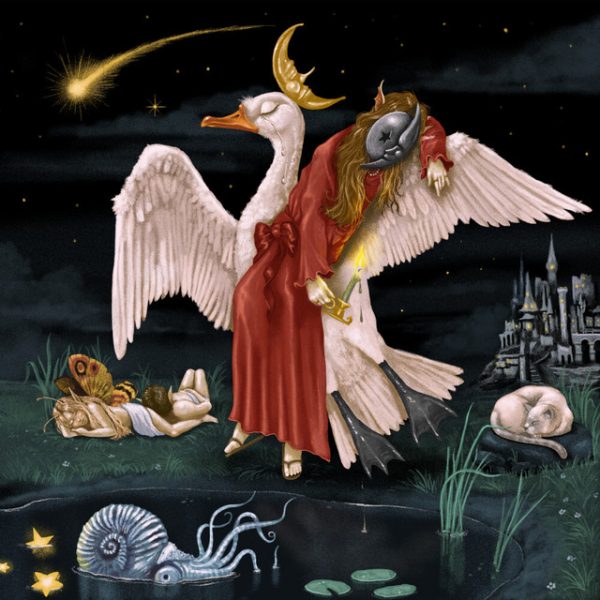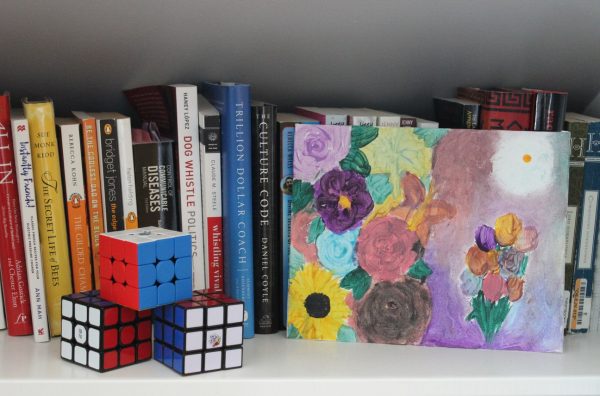Xu Bing’s “Dragonfly Eyes”: a study of fiction and reality
2015: A man leans against a metal rail as a spinning car barrels into a space just inches to his left.
2016: A woman walks through an abandoned courtyard, her head and her hands knotted behind her back.
1999: Water explodes from the earth beneath a six-lane highway, surging high into the sky.
Dragonfly Eyes is a film shot in singular moments. It is a collection but also a story: the compilation of thousands of “fragments of reality” all combined to create one unified story— one of love, tragedy and self-definition. Constructed entirely from snippets of surveillance footage live-recorded off of China’s cloud-database, it is a film no actors and camera crew: a film that pokes at the very definition of art itself and questions the line that exists between originality and derivitality.
Xu Bing is famous for this type of work.
“Book from the Sky”— an exhibition of 4,000 essentially meaningless handwritten Chinese characters — delved into the connections humans create between text, language and culture, and, in many ways, Dragonfly Eyes does the same things. It forces its viewers to think: about their own lives, the lives of others and how they fit into society and the mainstream they prescribe to.
It is Bing’s first exploration in film, and, while many have questioned his switch of mediums, Bing argues that even as his styles evolve and his mediums change, art is art. The essence of his creativity will never change and, because of this, Bing believes that those who truly appreciate his work will stand by him, no matter what medium or platform he may use to create and convey it.
But in every medium, one thing will always stay the same: Bing’s inherent ability to make his viewers think. Posing big questions, often left unanswered, Bing’s work is an attempt to create connections between people, worlds and experiences.
In Dragonfly Eyes, he does this through the ambiguous physical characteristics of the film’s protagonist Quin Ting: a mundane blurry-faced girl with features that change with each new scene and clip. But through this inconsistency and vagueness, Bing makes Quing Ting relatable. Quing Ting is the stranger you bump into on the street or even the young girl you knew in elementary school. She is everyone and yet no one.
Quin Ting is fictional character built from reality. Each of her faces is a real person living a very individual experience, and yet she is all of them. She is a paradox: hundreds of individuals — a symbol of the masses — contained within one character.
This is what Bing does; he creates fiction from reality. He takes our perception of the world— our understanding of fantasy and reality —and bends it.
Dragonfly Eyes is as much a love story as it is a psychological thriller, throwing us from side to side as our own beliefs, perceptions and understanding of society and the mainstream are turned upside down. It’s almost impossible to keep up with. Every moment flashes by like a past memory and yet lingers like deja-vu. It is thousands of separate, individual moments brought together into one stunning 81-minute film.
Dragonfly Eyes is a study of privacy but also a study of the many ways in which the construct of privacy has changed. It is not a film for the light-hearted, but if you are willing to put in the time and thought Dragonfly Eyes is a work of deep beauty, carrying the ability to open eyes and change minds. It forces its viewers to think about life and society in a way that is rare in American cinema. It is eccentric, vivid and confusing. It is provocative, elegant and mesmerizing. But beyond all of that, Dragonfly Eyes is an ode to Chinese cultural beliefs and values as well as a deep study of society and the changing mainstreams we choose to participate in.








